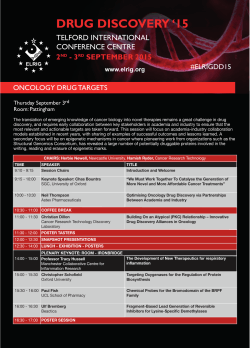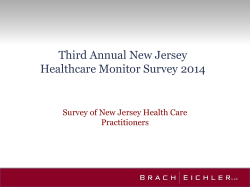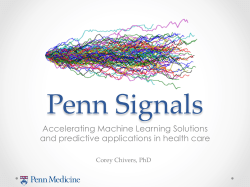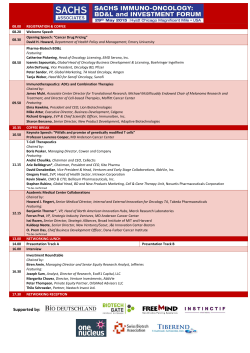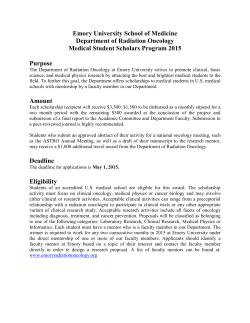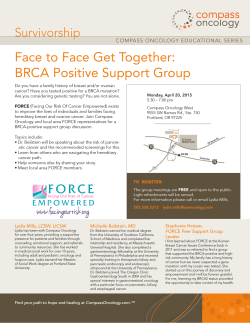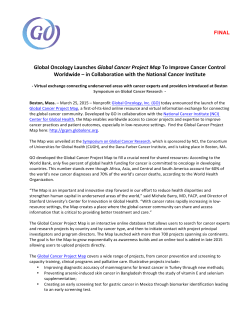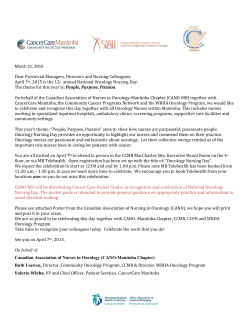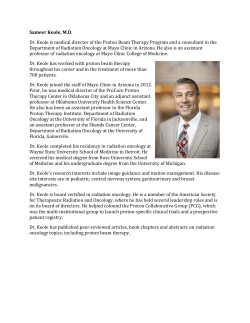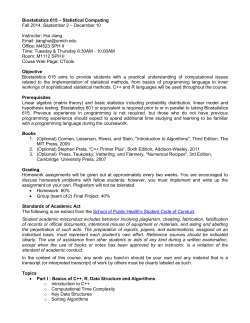
Keynote Lectures Sunday, June 24th 8:15 AM – 9:30 AM
Keynote Lectures Sunday, June 24th 8:15 AM – 9:30 AM Richard Simon Chief, Biometric Research Branch National Cancer Institute Biography: Dr. Richard Simon is Chief of the Biometric Research Branch of the National Cancer Institute (http://linus.nci.nih.gov/brb) where he is chief statistician for the Division of Cancer Diagnosis & Treatment. He holds a doctoral degree in Applied Mathematics and Computer Science from Washington University in St. Louis Missouri. With over 450 publications, he has been influential in promoting excellence in clinical trial design and analysis. In 1998 Dr. Simon established the Molecular Statistics & Bioinformatics Section of the National Cancer Institute, a multi‐disciplinary group of scientists developing and applying methods for the application of genomics to cancer therapeutics. He is the architect of BRB‐ArrayTools software for the analysis of microarray expression and copy number data; with over 13,000 registered users in 65 countries it has been cited in over 1500 publications. He is also the first author of a well received text on Design and Analysis of DNA Microarray Experiments. In recent years he has been involved in development of clinical trial designs for the development of new drugs and companion diagnostics. Title: On the Road to Personalized Genomic Medicine in Oncology [Type text] Abstract: Most cancer treatments benefit only a minority of patients who receive them. This results in an enormous burden on patients and on the health care system. The standard paradigm of conducting clinical trials on broad populations of patients with biologically heterogeneous disease leads in many cases to large trials with small treatment effects and inconsistent results. Improvements in understanding of tumor biology, developments in biotechnology and decreasing costs of genome sequencing make it increasingly possible to achieve an era of predictive medicine in oncology therapeutics. Oncology is well on the way to predictive, personalized, precision medicine. Nevertheless, there are major obstacles and misconceptions about how to develop predictive diagnostics that are “ready for prime time” and some of the existing paradigms of biostatistics interfere with progress. In this presentation I will address some of the impact of these developments on the field of biostatistics and some of the challenges ahead. Page 6
© Copyright 2025

